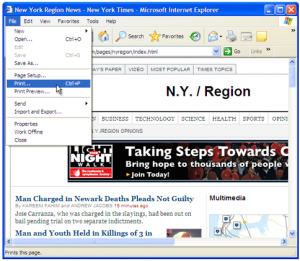What is the Size of the Average Web Page?
It has been observed that web pages have increased in size these days compared to a  few years back. In fact, web page sizes are more than triple the size of what they were usually in 2003. This has implications for web performance optimization professionals as well as web site owners. The amount of space a web page occupies is not the only issue with the growing sizes but also includes object overhead, web page delays, and load times.
few years back. In fact, web page sizes are more than triple the size of what they were usually in 2003. This has implications for web performance optimization professionals as well as web site owners. The amount of space a web page occupies is not the only issue with the growing sizes but also includes object overhead, web page delays, and load times.
Growth in Web Page Sizes
Statistics show that web page sizes in 1995 were usually less than 50 kilobytes. There was an average size increase by the year 2003 where the average size of web pages went up to 93.7 kilobytes. That number tripled as the years went by since by the year 2008 web pages had an average size of 312 kilobytes. We need to look into the components of a web page in order to understand the reasons for this increase in size.
Makings of a Web Page
We need to understand the anatomy of a web page to understand the increase web page sizes that we observe today. Web pages are basically composed of container objects and external objects. Container objects only occupy less than half of the total size of a web page since it is usually an XHTML file that is used to reference the external objects.
External objects are usually images, video, audio, JavaScript files, and external CSS. A container object will use up only 44% of the total size of a web page at best. From what we can observe, the huge culprit relating to web page size increase is the growth of multimedia on the Internet. It has been observed that the number of external objects used on web pages on average has almost doubled since 2003. The drive has been to make more elaborate web pages thus creating the need for optimization.
Wrong Assumption
It is interesting that web designers have made the mistaken assumption that a really large proportion of the Internet audience use broadband. This assumption is understandable since broadband Internet has become more widespread in recent years. However, almost half of the number of households in the United States are still using dial up connections in 2008. Optimization of web pages becomes a key to solve this current dilemma.
Resolutions for the Issue
In response to this issue of increasing web page sizes several solutions are offered for optimization and faster load times. The first solution comes in the form of enhancements targeted to deliver more universal HTML pages. The second alternative is to offer both low and high bandwidth versions of your pages. And the last one is to rethink your web page design giving way for optimization to accommodate low bandwidth consumers.





